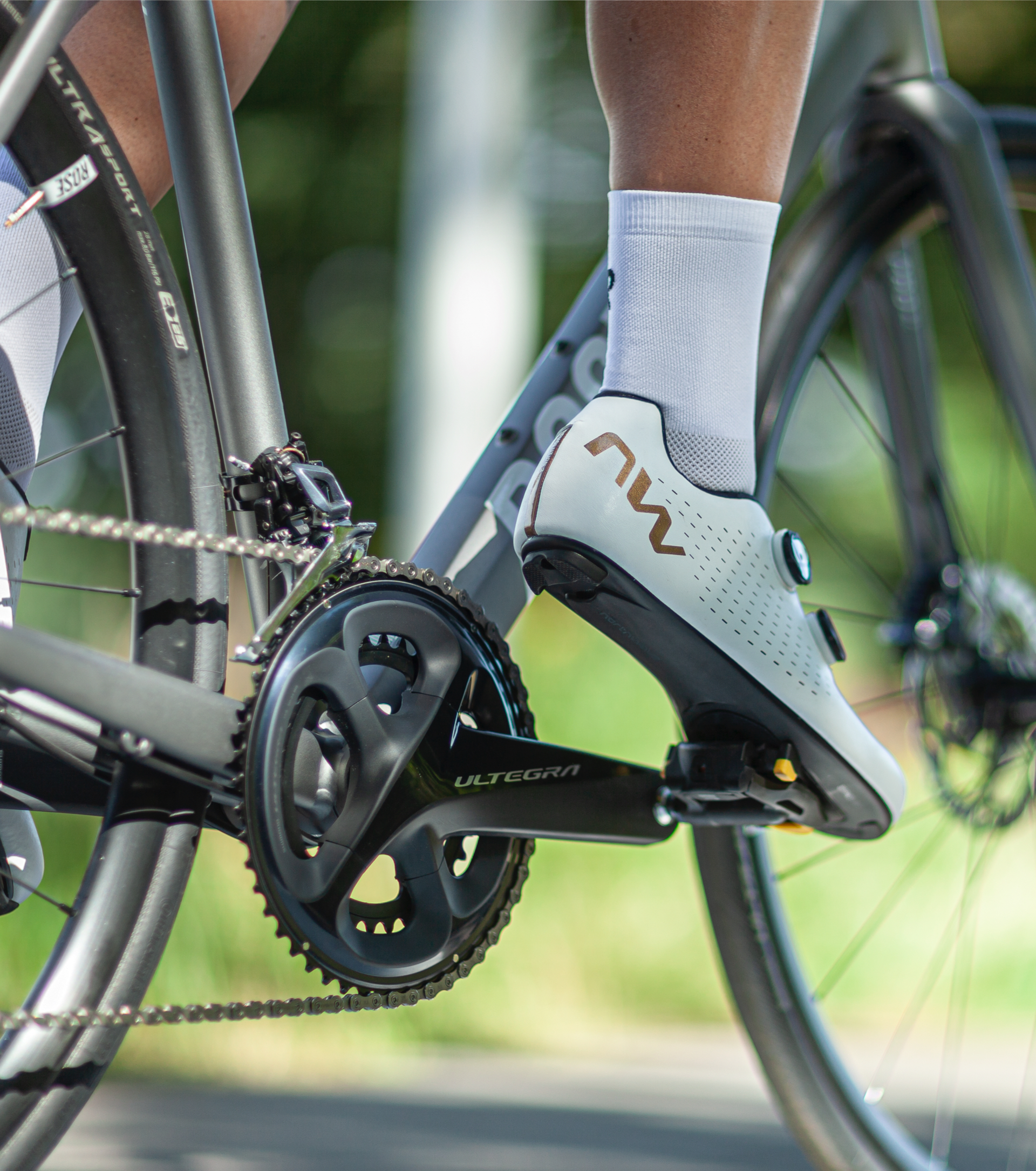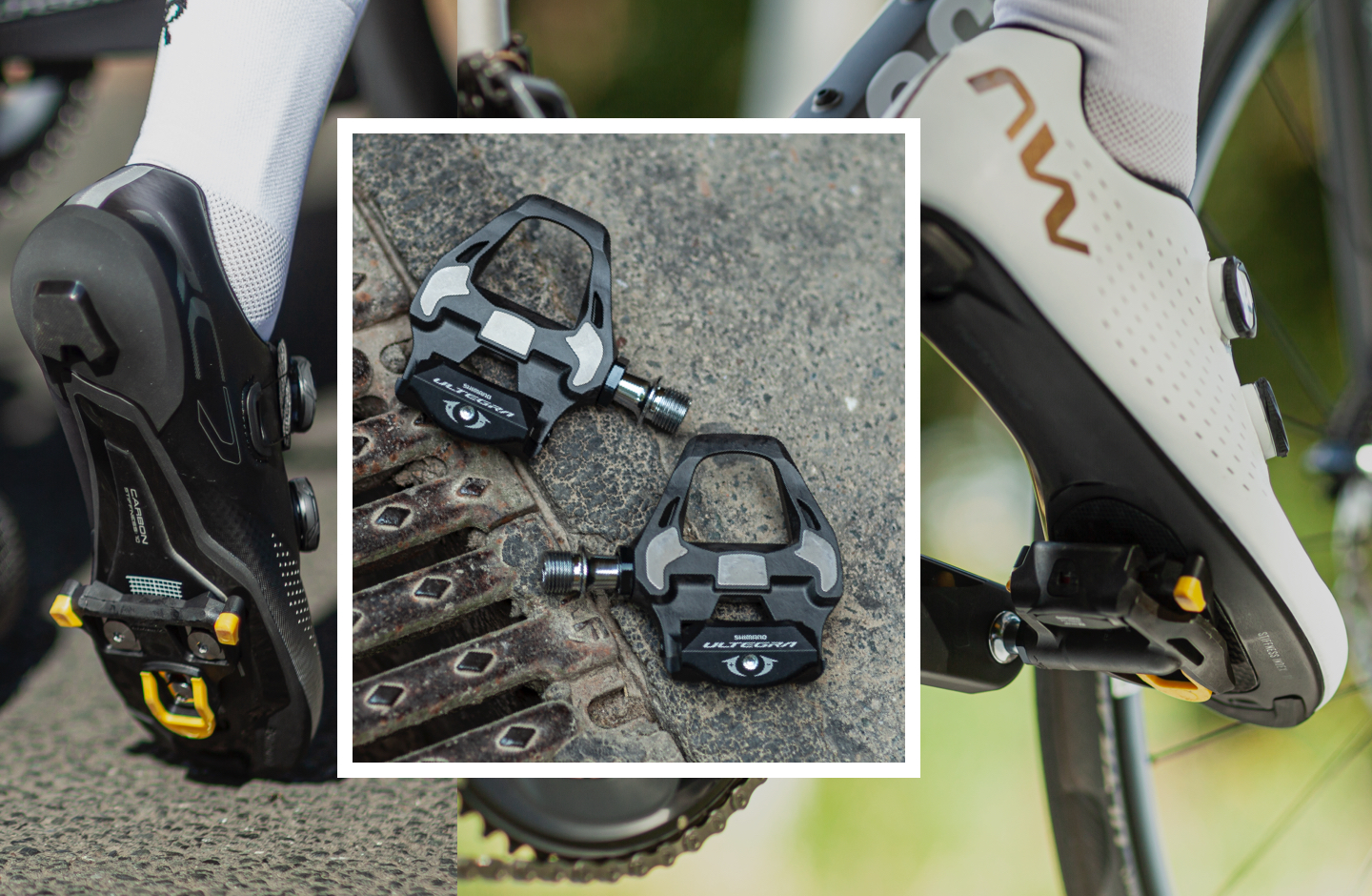We need your consent to load Youtube.
We use a third-party service to embed video content such as from Youtube. This service may collect data about your activities. Please read the details and agree to use the service to view this video.
)
The pedal is probably the most important point of
contact between rider and bike - this also true for the road bike pedal. Here,
muscle power is transferred to the bike and converted into speed. That’s why it
is vital that you find a pair of pedals that suits you and ensures optimal
power transmission.
In this guide we will show you the advantages and
disadvantages of the different pedal systems and explain what you should look
for when buying a pedal. Whether you are a road bike beginner or an experienced
road bike rider - here you will find all the information you need.
With road bike
clipless pedals, there is a firm connection between your road bike shoes and
the pedals. This is possible thanks to the cleat. The plate is screwed into the
three triangular holes in the sole of your shoe and remains there. To click you have to step on the pedal with a firm movement,
which requires some practice at first. To unclick, turn the heel sideways to
the outside. You can usually adjust how easy it should be to click out (the
so-called "release hardness") on the pedal.
However,
clicking road bike pedals in and out requires practice. Beginners should
therefore practise standing up first before going on their first ride.
The advantage of
a clipless pedal over a platform pedal? With the classic platform pedal, you
can only exert force by pressing down on the pedal. A clipless pedal, on the
other hand, also allows you to pull up the pedal. This allows you
to transfer your power even more evenly to the pedal and thus the crank.
Another
advantage is that your feet always remain in the optimal position for
you. You can adjust the position of the cleats individually - depending on
what is best for your needs. This can help make your rides more ergonomic and
prevent joint pain.
Another
practical feature is that you can't slip off the pedals, even in
difficult weather or riding conditions.
In addition,
road bike clipless pedals are used with special road bike shoes.
These have a harder sole than, for example, street shoes and thus a certain
stiffness. This gives your foot an even firmer footing and improves power
transfer to the pedal. It also minimises the loss of power and allows you to
more efficiently use your energy.
In contrast to
mountain bike click systems, the click systems of road bike pedals have a larger
contact surface and thus better power transmission.
Another advantage of road bike pedal systems and cleats is their low weight.
However, they are also less robust and have reduced self-cleaning properties.
Therefore, road bike pedal systems are often somewhat more susceptible than MTB
click systems.
So if you want
to get off your bike for a quick trip to the café, the cleats on your shoes
will make it difficult for you to walk. When running with cleats, we
recommend cleat covers. These make running easier and protect the
cleats from being damaged while walking.
With adapter
plates, you can quickly transform your clipless pedal into a platform
pedal. This means you can ride your bike with street shoes and use it for more
activities, such as commuting or quick errands.
)
We use a third-party service to embed video content such as from Youtube. This service may collect data about your activities. Please read the details and agree to use the service to view this video.
Flexibility and
versatility - with a duo pedal there are no limits. The duo
pedal, also called a combination pedal, brings together a click and
platform pedal in one pedal system. This makes them optimal for
flexible riders who want to switch between both pedals or beginners who would
like to try clipless pedals.
Duo pedals can
be ridden on one side like a platform pedal with any type of shoe,
sneakers or otherwise. These are particularly popular for short
distances in the city or relaxed road bike tours.
On the other
side of the pedal is a click system with two-hole standard, which
is normally used in mountain biking. For these you need the right cycling shoes
and cleats. The clipless pedal side is usually SHIMANO SPD compatible.
The selection of
road bike clipless pedals is usually larger than that of duo pedals. This is
because duo pedals are generally used by beginners in the road
bike sector who want to familiarise themselves with clipless pedals. Road
cycling pros use the classic clipless pedals for their races and training
laps.
Although
platform pedals are unusual in the road bike sector, some cyclists do use
them.
They score
points with their easy handling and uncomplicated use.
Therefore, they are particularly well suited for short-distance riders or
racing bike beginners.
The pedal is not
firmly attached to the shoe, so you can easily ride them with sports
shoes or sneakers. This is practical for short and sporty hobby tours
or a quick ride out for ice cream.
Thanks to the
rubberised or roughened surface, you have a secure grip when road cycling. The large
support surface also offers you enough space for a secure stand.
One great
advantage is the freedom of movement. The rider's foot is not
attached to the pedal, so it is easy to get on and off, for example
at traffic lights.
For even more
grip, there are also platform pedals with pins. The contact surface
is reinforced with pins that press lightly into the sole of the shoe. This
gives you even more grip in wet conditions.